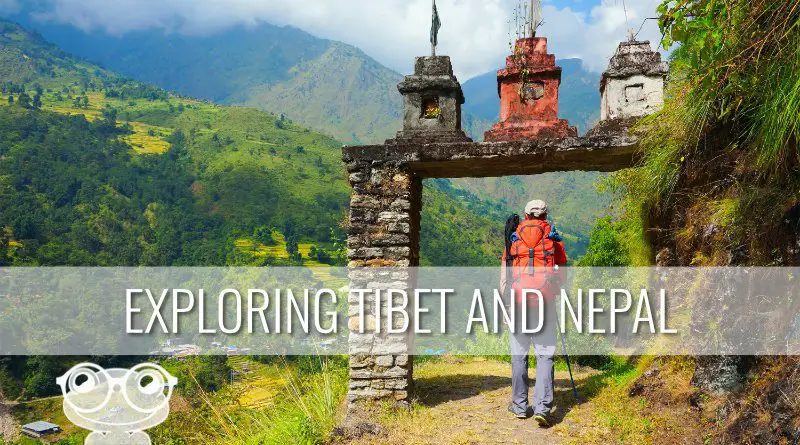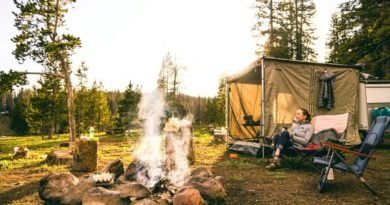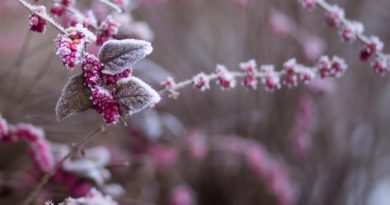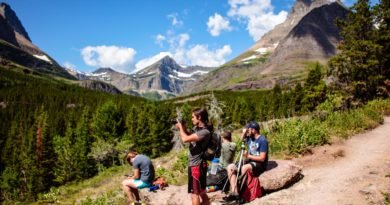Last modified on March 18th, 2020 at 3:57 am
Exploring Tibet and Nepal: A Trekking Guide
The Himalayan mountains are a dream for trekkers of all experience levels, from the novice on their first run, to the seasoned trekker that has seen it all. That’s because the treks through Nepal and Tibet offer views and experiences that simply can’t be matched or duplicated elsewhere in the world. There’s no shortage of various treks and side routes you can take to custom tailor the trek to your interests, so it’s important to do your research before you visit. This trekking guide will show you the top treks around Nepal. We also go over the details you need to prepare a successful and safe trek around the region.
Gokyo Trek
This is a great area to go trekking, since it's fairly straightforward. Essentially, it's a return track, so you'll get back on the same route you came on. Gorgeous natural lakes are sprinkled along the trek. You'll get a straight on view of the majestic Cho Oyu mountain and reach altitudes of 5,360 metres.
This trek takes a little under 2 weeks to complete, and you’ll start the trek from Lukla. If you want to pack in some extra special views, try taking a side trek that leads Gokyo Ri. It only takes about 4 hours, and you get some excellent views of Everest and Makalu. Or, if the lakes have caught your eye, you’ll want to try the Scoundrel’s Lookout side trek. It’s a little longer at 5 hours, but you can see the highly revered and sacred river Dudh Kosi.
There are tea houses along the way if you don’t want to camp out, but make sure you have all your papers in order before setting out. You’ll need a TIMS card, like many of the treks in Nepal require. You also need to get a permit from Sagarmatha National Park.
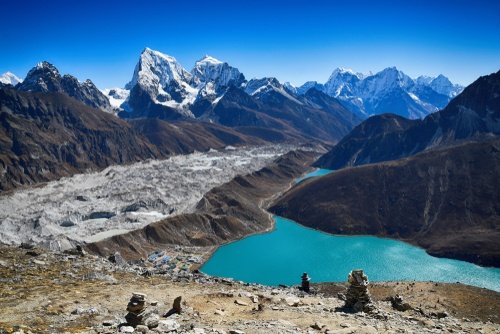
Manaslu Trek
This trail is still being restored after the earthquake that damaged many of the trails in 2015. That said, there’s an intense restoration effort in progress, and some of the trails are open for trekking. It’s always a good idea to check ahead of your visit to make sure of openings, but if you take this trek you’ll be treated to something of the most amazing vistas and ancient cultural sites in the area.
This trek can take about 2 ½ weeks and brings you across the border from Nepal right into Tibet. It’s a good, moderate trek with some steep slopes; the elevation reaches about 5,100 meters. Manaslu mountain has the 8th tallest peak worldwide, and is known as a great trek.
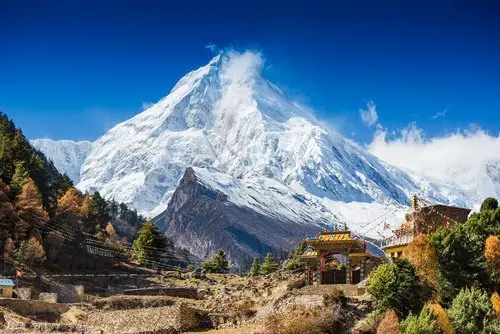
Kanchenjunga North
This trek is one of the best in Eastern Nepal and is well known for some fantastic treks. This is one of the tallest mountains in the world, ranking in at number three with an elevation of 8586 meters. It’s no surprise, then, that you will need to hire a guide, whether through an agency or by seeking out an individual trekking guide. It’s a more difficult trek and you can expect to run into some very long runs of steep terrain, both up and downhill.
While this trek will certainly test you, it’s well worth the effort to enjoy the passage through the renowned Rhododendron forests and the dazzling vista that looks out at the eastern side of Mount Everest.
There are some tea houses along the way, but these are of a more informal type, usually consisting of houses of the locals. The entire trek should take between 18 and 20 days, so it’s recommended to hire a porter too.
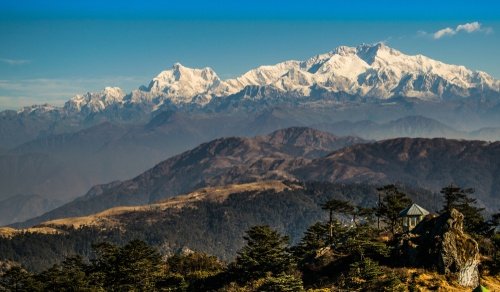
Phoksumdo Lake To Shey Gompa
This is an ideal trek for explorers that like a very unique experience or that are planning a trek with less time. The entire trek takes only about a week to a week and a half, although it isn’t a strictly ‘easy’ trek. The difficulty ranges from moderate to difficult, and you’ll end up reaching an altitude of 5,160 meters.
The real standout part of this trek (scenery and artifacts aside), is that it hasn’t been publicly opened for very long; it’s only been open to visitors since 1992, and still requires a permit if you want to take the trek. You’ll start out west of the Mustang Valley, in Jonsom.
While it may be out of the way, it’s certainly worth the trip; it’s easily one of the most majestic treks you can take in Nepal. Along the way, you’ll see buildings and artifacts that are several hundred years old. In fact, near the end, as you enter Shay Gompa, you’ll be able to explore the 800 year old building.
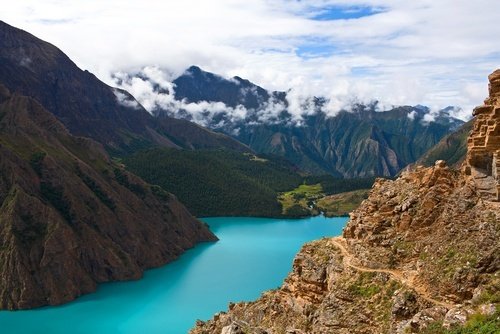
Everest Base Camp
Located in the Khumbu Valley, the Everest Base Camp trek is known as one of the ‘must do’ routes for serious trekkers, and trekking aficionados alike. It’s not hard to see why; Mount Everest boasts the tallest peak world wide, and the trek offers breathtaking views of the Himalayan mountains.
You’ll begin at Lukla, which requires you to have to fly in. For many trekkers, this can be one of the most adrenaline fueled aspects of the trip! Once you land, it’s a good idea to spend a day or two (if possible) in town to allow yourself to adjust to the elevation before you start hiking. While you’re here, make sure you have your TIMS card registered and ready to go. As you go through the valley, you’ll pass monks chanting in Namche Gompa; you’ll also have plenty of chances to explore different side routes.
If you don’t mind a handful of extra hiking hours, it’s worth a detour to Ama Dablam. Then, for another amazing alternate route, check out Kala Pattar, which offers unrivaled views of the Himalayan’s majesty.
Trekking Tip: peak season gets very busy now, so the teahouses and accomodations along the way fill up quickly. Sending your porter ahead to check on vacancies ensures you won’t have to sleep rough.
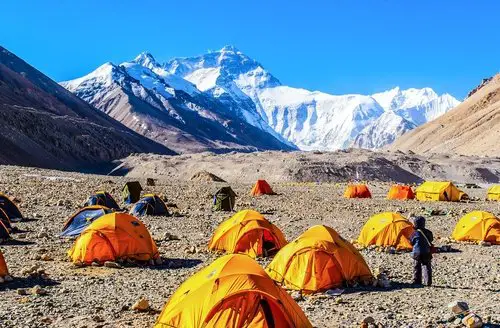
Essential Equipment When Going on Trekking
Everybody thinks they’ve gone over their packing list and doubled checked it. At least, until they run into a situation and realize they’ve neglected a crucial piece of equipment. It’s a good idea to gather your supplies well in advance of your trek, and to test it all out for function, comfort, and fit. Here are the essential bits of gear you need to go on a trek:
Flashlight/Head lamp
While you may have already thought of bringing an extra flashlight, there’s another aspect to consider: a headlamp. Handheld flashlights can be dropped, and if it gets dark on your trek, it could be a very bad situation. A headlamp is not only an important backup, it’s an important piece of survival gear, especially if the weather turns or it gets dark faster than anticipated.
Hydration Packs
You can survive without a lot of things, but clean water isn’t one of them. Hydration packs are hands down one of the most important things to equip yourself with, especially if your trek is out of the way of any other water sources.
Trekking Clothing
Weather can be unpredictable, so make sure you have clothing for any occasion. Comfortable clothing for nice hiking weather is important, but so is a weatherproof jacket. Make sure you have well fitting, sturdy boots, and plenty of insulated underclothing for cold weather.
Keep a down jacket on hand in case the weather turns, and make sure you’ve packed plenty of extra, dry pairs of socks.
Camping Gear
As you trek through Nepal and Tibet, there are usually tea houses along the way. Trekkers can pay a fee to stay there, but in peak seasons they quickly run out of accomodations. It’s important to have a durable tent, and comfortable sleeping bag with you, just in case. Make sure the tent is rated for the conditions when you’ll be out, and make sure you have a hiking bag that you can carry for extended periods.
Toiletries and First Aid
Have dedicated bags for toiletries and first aid. If you need either, you won’t want to waste time rifling through other bags and pockets to get them. Getting a bag designed for these purposes is best, but a smaller bag with plenty of pockets and compartments will help keep you organized too.
When Is the Best Season To Go
The best season to visit Nepal for a trek can vary, depending on the treks you plan on taking and how much of a crowd you’re willing to deal with. You can certainly go any time of the year, but you’re going to have a very different experience with each different season.
First, let’s talk about the two main peak seasons:
Spring
Spring in Nepal is considered the first peak season. It’s not as busy as the autumn peak season, but expect plenty of other visitors. Spring typically lasts from February to April, give or take a few weeks. April is by far the busiest month in spring.
There is an advantage to visiting in spring. You get to see plenty of blooming flora which adds to the stunning view. The weather is also warming up as the days get longer. It’s popular with visitors looking to get that ideal blossom covered summit photo. If you want to visit in spring, but can sacrifice a little comfort for a less crowded trek, try planning your trek for late February or early March. The weather’s still cooler, but the treks aren’t too crowded yet.
You also don’t have to deal with much, if any, lingering snow. Which means you’re free to enjoy prolific blooms and Rhododendrons (Rhododendron Forest) at their most spectacular.
Autumn
Autumn is the second peak season to visit Nepal, and it lasts from late September to November. The most popular month to go in autumn is typically September, although it’s sometimes later if monsoon season ends later than usual.
Autumn is definitely the more popular, more crowded of the two main peak seasons. That’s due, in large part, to the refreshingly mild weather, clear skies, and green covering the mountains. Popular, or well known, treks tend to be at their most crowded at this time, especially in September. If you don’t mind crowds, this won’t be a problem. However if you’d like a little more peace and quiet on your trek but still want to enjoy fall in Nepal, try going on less frequented, more out of the way treks.
It’s worth mentioning that while September is very popular, the weather is still subject to change. As we mentioned earlier, monsoon season can come later. The best way to avoid getting rained out of a good trek is to plan to go at least a couple weeks past mid September (when the risk of unexpected rains has mostly passed).
What about Summer and Winter?
As we mentioned earlier, you can trek in Nepal year round. An advantage to going in summer or winter is that you also don’t have to pay peak pricing, but it does come with other costs.
Winter can be absolutely gorgeous in Nepal, but you also run the risk of blocked paths. If you choose to go in winter, a trekking guide is highly recommended. You’ll also need to get gear that can handle the freezing temperatures.
Summer is also known as Monsoon Season. Typically occurring July through August, the weather is highly variable. It also gets quite hot which results in a lot of humidity when combined with heavy rains. There’s also more than enough lighting and storms to put you on guard, and if that doesn’t, the landslide risk should. There’s also limited visibility, so summer isn’t the best season to visit.
The treks that run through Nepal and Tibet are unequalled in their beauty and richness. There are plenty of treks that cater to every skill level, and interest. Whether you want to conquer the toughest trek, or explore sacred sites along the mountains, a trek through Nepal is its own reward.

